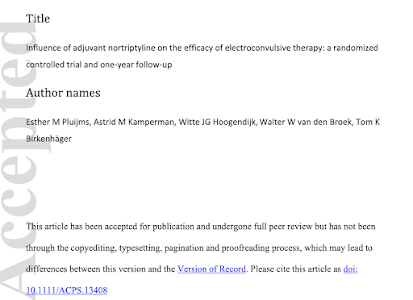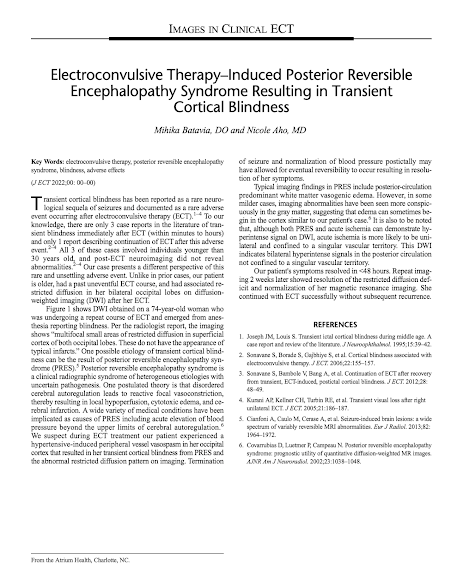Nortriptyline Does Not Enhance Acute ECT: New Small Study From Europe

Out on PubMed, from researchers in The Netherlands and Belgium, is this study: Influence of adjuvant nortriptyline on the efficacy of electroconvulsive therapy: a randomized controlled trial and one-year follow-up. Pluijms EM, Kamperman AM, Hoogendijk WJ, van den Broek WW, Birkenhäger TK. Acta Psychiatr Scand. 2022 Feb 12. doi: 10.1111/acps.13408. Online a head of print. PMID: 35152416 The abstract is copied below: Objective: There is limited evidence that adding an antidepressant to electroconvulsive therapy (ECT), compared with ECT monotherapy, improves outcomes. We aimed to determine whether the addition of nortriptyline to ECT enhances its efficacy and prevents post-ECT relapse. Methods: We conducted a randomized, double-blind, placebo-controlled trial (RCT). Patients with major depressive disorder and an indication for ECT received either nortriptyline or placebo during a bilateral ECT course. Outcome measures were mean decrease in Hamilton Rating Scale for Depression (HRSD) s












